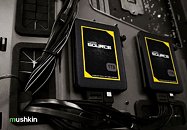
Counter-Strike 2 with NVIDIA Reflex and GeForce RTX 40 Series GPUs
Counter-Strike: Global Offensive's popularity has continued to increase since its release way back in 2012, and today, it remains the most played game on Steam each week, boasting over one million concurrent players. Now, Valve has launched Counter-Strike 2, a graphical and technological update that upgrades Counter-Strike: Global Offensive to the Source 2 engine, leveraging newer graphics APIs for improved fidelity and responsiveness. NVIDIA has worked with Valve to make sure system latency, which is critical to winning, is at an absolute minimum with the addition of NVIDIA Reflex.
In competitive shooters such as Counter-Strike 2, higher FPS and lower system latency allows you to acquire targets faster, react more quickly, and increase aim precision. On a GeForce RTX 40 Series PC or laptop, your skill won't be constrained by system latency, or frame rates. Get the ultimate Counter-Strike 2 competitive experience, powered by GeForce RTX 40 Series for unbeatable performance, and NVIDIA Reflex for the lowest latency. Gamers with a compatible graphics card can enable NVIDIA Reflex in Counter-Strike 2 to reduce system latency by up to 35%.
In competitive shooters such as Counter-Strike 2, higher FPS and lower system latency allows you to acquire targets faster, react more quickly, and increase aim precision. On a GeForce RTX 40 Series PC or laptop, your skill won't be constrained by system latency, or frame rates. Get the ultimate Counter-Strike 2 competitive experience, powered by GeForce RTX 40 Series for unbeatable performance, and NVIDIA Reflex for the lowest latency. Gamers with a compatible graphics card can enable NVIDIA Reflex in Counter-Strike 2 to reduce system latency by up to 35%.






























